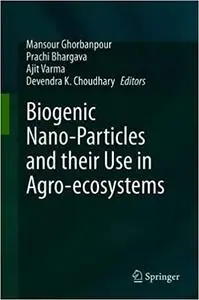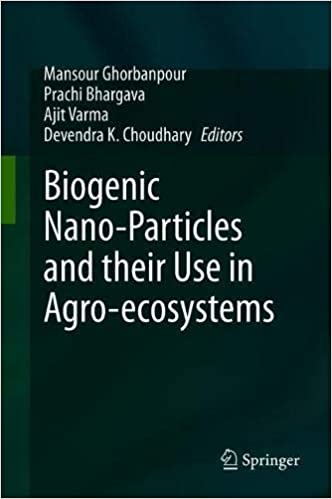Mansour Ghorbanpour, "Biogenic Nano-Particles and their Use in Agro-ecosystems"
English | ISBN: 9811529841 | 2020 | 624 pages | EPUB, PDF | 23 MB + 11 MB
English | ISBN: 9811529841 | 2020 | 624 pages | EPUB, PDF | 23 MB + 11 MB
Several nano-scale devices have emerged that are capable of analysing plant diseases, nutrient deficiencies and any other ailments that may affect food security in agro-ecosystems. It has been envisioned that smart delivery systems can be developed and utilised for better management of agricultural ecosystems. These systems could exhibit beneficial, multi-functional characteristics, which could be used to assess and also control habitat-imposed stresses to crops.
Nanoparticle-mediated smart delivery systems can control the delivery of nutrients or bioactive and/or pesticide molecules in plants. It has been suggested that nano-particles in plants might help determine their nutrient status and could also be used as cures in agro-ecosystems. Further, to enhance soil and crop productivity, nanotechnology has been used to create and deliver nano fertilizers, which can be defined as nano-particles that directly help supply nutrients for plant growth and soil productivity.
Nano-particles can be absorbed onto clay networks, leading to improved soil health and more efficient nutrient use by crops. Additionally, fertilizer particles can be coated with nano-particles that facilitate slow and steady release of nutrients, reducing loss of nutrients and enhancing their efficiency in agri-crops.
Although the use of nanotechnology in agro-ecosystems is still in its early stages and needs to be developed further, nano-particle-mediated delivery systems are promising solutions for the successful management of agri-ecosystems. In this context, the book offers insights into nanotechnology in agro-ecosystems with reference to biogenic nanoparticles. It highlights the:
• occurrence and diversity of Biogenic Nanoparticles
• mechanistic approach involved in the synthesis of biogenic nanoparticles
• synthesis of nanoparticles using photo-activation, and their fate in the soil ecosystem
• potential applications of nanoparticles in agricultural systems
• application and biogenic synthesis of gold nanoparticles and their characterization
• impact of biogenic nanoparticles on biotic stress to plants
• mechanistic approaches involved in the antimicrobial effects and cytotoxicity of biogenic nanoparticles
• role of biogenic nanoparticles in plant diseases management
• relevance of biological synthesized nanoparticles in the longevity of agricultural crops
• design and synthesis of nano-biosensors for monitoring pollutants in water, soil and plant systems
• applications of nanotechnology in agriculture with special refer to soil, water and plant sciences
A useful resource for postgraduate and research students in the field of plant and agricultural sciences, it is also of interest to researchers working in nano and biotechnology.



